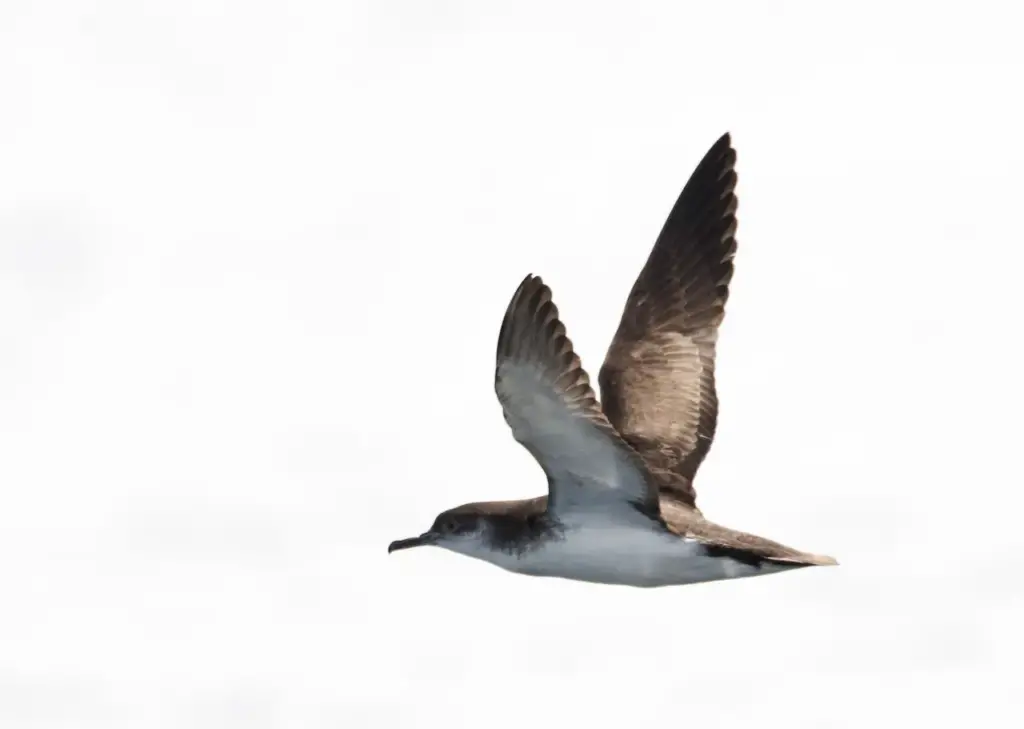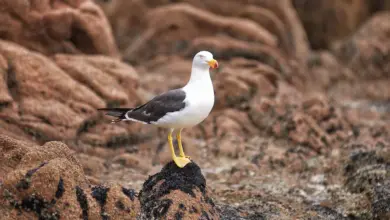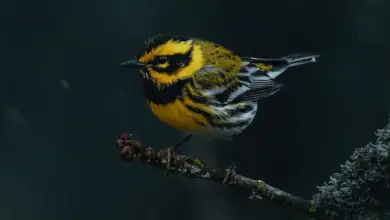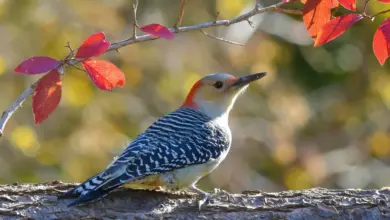Manx Shearwater (Puffinus puffinus)
The Manx Shearwaters (Puffinus puffinus) is a medium-sized shearwater in the seabird family Procellariidae. The scientific name of this species records a name shift: Manx Shearwaters were called Manks Puffins in the 17th Century. Puffin is an Anglo-Norman word (Middle English “pophyn”) for the cured carcasses of nestling shearwaters.
The Atlantic Puffin acquired the name much later, possibly because of its similar nesting habits.
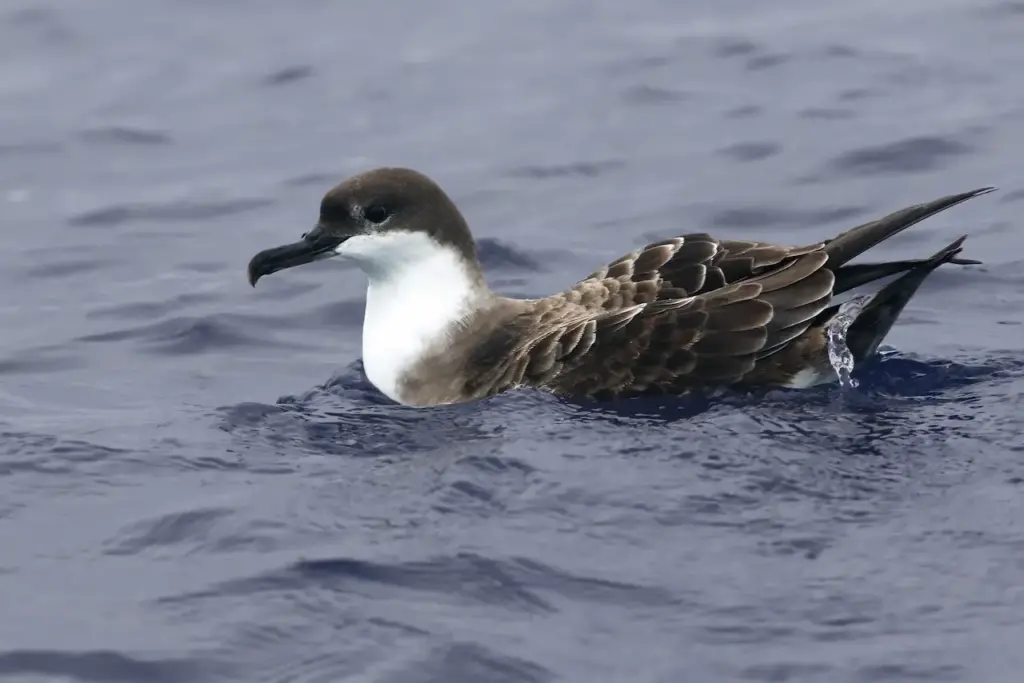
The prefix Manx, meaning from the Isle of Man, originated owing to the once large colony of Manx Shearwaters found on the Calf of Man (a small island just south of the Isle of Man).
The species had declined there owing to the accidental introduction of rats from a shipwreck in the late eighteenth century; the rats have, however, recently been removed from the Calf of Man allowing Shearwater numbers to increase.
Distribution / Range
This species breeds in the North Atlantic, with major colonies on islands and coastal cliffs around Great Britain and Ireland.
Manx Shearwaters migrate over 10,000 km to South America in winter, using waters off southern Brazil and Argentina, so this bird has covered a minimum of 1,000,000 km on migration alone (not counting day-to-day fishing trips).
Another bird ringed in 1957 and breeding on Bardsey Island off Wales, was calculated by ornithologist Chris Mead to have flown over 8 million km (5 million miles) during its life (this bird was still alive in 2008, having outlived Mead).
This bird has now exceeded the age record for any known living European bird surpassing the Copeland Island bird by at least a year making it at least 56 years old.
Nesting / Breeding
These birds have been nesting along the Atlantic coast of northeastern North America since about 1970. They nest in burrows, laying one white egg which is only visited at night to avoid predation by large gulls. They form life-long monogamous pair bonds.
Description
This bird is 30-38 cm long, with a 76-89 cm wingspan. It has the typically “shearing” flight of the genus, dipping from side to side on stiff wings with few wingbeats, the wingtips almost touching the water.
This bird looks like a flying cross, with its wing held at right angles to the body, and it changes from black to white as the black upper parts and white undersides are alternately exposed as it travels low over the sea.
This is a gregarious species, which can be seen in large numbers from boats or headlands, especially on passage in autumn.
It is silent at sea, but at night the breeding colonies are alive with raucous cackling calls
They are extraordinarily long-lived. A Manx Shearwater breeding on Copeland Island, Northern Ireland, was as of 2003/2004 the oldest known living wild bird in the world: ringed as an adult (at least 5 years old) in July 1953, it was retrapped in July 2003, at least 55 years old.
Diet / Feeding
The Manx Shearwater feeds on small fish (particularly herring, sprat, and sardines), crustaceans, cephalopods, and surface offal (= entrails and internal organs of butchered animals).
The bird forages individually or in small flocks, and it makes use of feeding marine mammals and schools of predatory fish, which push prey species up to the surface. It does not follow boats.
Puffinus puffinus subspecies
At some time or another, every living one of the middle-sized species of Puffinus has been considered a subspecies of P. puffinus. The extant Yelkouan Shearwater and Balearic Shearwater (Sangster et al. 2002), Hutton’s Shearwater, Black-vented Shearwater, Townsend’s Shearwater, the Hawaiian Shearwater, and the Fluttering Shearwater are now considered good species. Of these, only the Hawaiian and possibly Townsend’s Shearwaters seem to be somewhat closely related to the Manx Shearwater (Austin 1996); the former Puffinus puffinus “superspecies” has turned out to be a number of more or less distantly related lineages.
However, including the extinct forms listed below, at least the Mediterranean taxa do apparently constitute a superspecies in their own right, and maybe the New Zealand ones also.
Also belonging to this complex seem to be several extinct species:
- Lava Shearwater or Olson’s Shearwater, Puffinus olsoni from the Canary Islands, as was
- Hole’s Shearwater, Puffinus holeae, which also occurred on the western coasts of Iberia, and
- Scarlett’s Shearwater, Puffinus spelaeus of South Island, New Zealand;
undescribed remains found on Menorca may belong to an already-named or a new taxon; they are not from the Balearic Shearwater (Alcover 2001) which is possibly closer to P. holeae than to any other known species, living or extinct.
There also existed a Late Pliocene/Early Pleistocene species known from Ibiza, Puffinus nestori, which may have been the direct ancestor of the Mediterranean Shearwater (Heidrich et al. 1998).
The Atlantic forms are parapatric whereas the Pacific forms are sympatric or were not too long ago (Holdaway et al. 2001) and are reproductively isolated by a different circannual rhythm.
On the island of Rhum, about 4% of the chicks are preyed on by Red Deer and Sheep that need extra Calcium.
History and Folklore
In his book The God Delusion, Richard Dawkins cites the Manx Shearwater in discussing the Argument from Personal ‘Experience’ (p. 87):
One of the cleverer and more mature of my undergraduate contemporaries, who was deeply religious, went camping in the Scottish isles. In the middle of the night he and his girlfriend were woken in their tent by the voice of the devil, Satan himself; there could be no possible doubt: the voice was in every sense diabolical.
My friend would never forget this horrifying experience, and it was one of the factors that later drove him to be ordained. My youthful self was impressed by this story, and recounted it to a gathering of zoologists relaxing in the Rose and Crown Inn, Oxford. Two of them happened to be experienced ornithologists, and they roared with laughter. ‘Manx Shearwater!’ they shouted in delighted chorus.
One of them added that the diabolical shrieks and cackles of this species have earned it, in various parts of the world and various languages, the local nickname ‘Devil Bird’.
In the nineteenth century Manx novel ‘The Manxman’ by Sir Hall Caine, a reference is made to the satanic folklore surrounding the Manx shearwater, apparently due to its unusual call and dark appearance.
